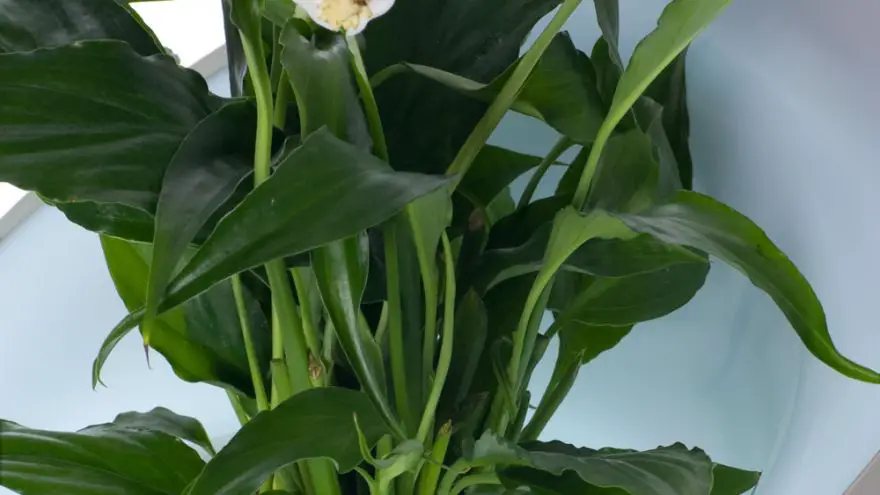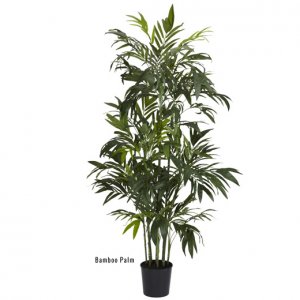Air Purifying Plants for Your Home
 Air Purifying Plants for Your Home
thegearhunt.com
Air Purifying Plants for Your Home
thegearhunt.com
Why should you purify the air in your home? Did you know that the air that you breathe in your home can be as much as 5x more polluted than outside air? The EPA (Environmental Protection Agency) has ranked the pollution of indoor air in the top 5 when it comes to things in the environment that are risks to public health.
Common Pollutants that are Airborne
 Viruses. In only a single cubic meter of air there might be as many as 15,000 flu viruses.
Viruses. In only a single cubic meter of air there might be as many as 15,000 flu viruses.
Floating Dust. A single ounce of dust contains as many as 42,000 dust mites that are alive. Each one of those dust mites expels 20 pellets of feces every single day. Those fecal pellets go right into the air you are breathing right now.
Allergens. It is estimated that 20% of Americans suffer from a variety of allergies. When it comes to chronic diseases in the United States, allergy is ranked 5th among all age groups.
Office chemicals. Odors from things like toner from copiers, correction fluid, glues, inks, felt markers, and other chemicals in offices can emit other vapors.
General household odors and smoke from cigarettes. Both men and women who are exposed to heavy smoke indoors are as much as 33% more likely to suffer from COPD in the future.
Animals. 100% of households in the US have levels of cat and dog dander that are detectable. Hairless or short-haired animals contribute allergens and dander to the pollution of indoor air just as much as animals with hair do. There really isn’t any such thing as a cat or dog that is non-allergenic.
Where can You Find These Pollutants in Your Office and/or Home?
Air vents. Central air condition and/or heating systems can actually be a breeding ground for things like mildew, mold, and other sources of germs like bacteria and viruses. This same system then works to distribute all of these contaminants throughout your office or home.
Upholstery and furniture. Dust particles that are on furniture that is upholstered can contain flakes of skin from humans, pet dander, decomposing parts of insects, and textile fibers. All of this gets released into the air as soon as someone sits down.
Carpet. Did you know that carpet can hold as much as 8x its weight in pesticides, dirt, and other toxins – like lawn pesticides and automotive fluids that you can get on your shoes from parking lots – that are brought in on your bare feet as well as on your shoes? When they are dry, these toxins turn into airborne particles that are undetectable.
Office dividers. Cubicle divider walls can actually be magnets for things like pollen and dust. Office dividers are also the things that are nearest to your breathing area while you are working and can hold some of the inhaled pollutants that are the most inhaled.
How You can Remove Those Airborne Pollutants from the Air
 The first step you can take to remove these pollutants is using an air purifier. The ones with HEPA filters can safely get rid of 99.97% of the pollutants in the air that are as tiny as 0.3 microns.
The first step you can take to remove these pollutants is using an air purifier. The ones with HEPA filters can safely get rid of 99.97% of the pollutants in the air that are as tiny as 0.3 microns.
Aside from that, you can also:
Dust. Generally, feather dusters will just stir the dust up into the air. If you want to reduce this floating dust, use a microfiber dust cloth or duster when you dust your home. Additionally, you can change the filter in your furnace and air conditioning system in order to reduce the amount of dust that is floating around in the ventilation system of your home.
Plants
Yes, those potted ferns can be pretty, but can they also work to clean the air inside your office or home? NASA scientists conducted studies, so did researchers at the University of Georgia and Penn State University, and these studies found that they really can do just that.
Plants are great when it comes to absorbing gases through those tiny pores that are on the surface of the leaves. This is what facilitates photosynthesis. For those who didn’t have science in elementary school, photosynthesis is the process plants use to convert the energy from light and carbon dioxide into the chemical energy that they need in order to grow.
Scientists who studied the ability of indoor plants to filter and purify the air found that the plants can actually absorb quite a few more gases as well as the carbon dioxide. This includes a laundry list of VOCs (Volatile Organic Compounds). Benzene, which is found in cigarette smoke, fabrics, and some plastics, and formaldehyde, which is found in carpet cleaner, fabric softener, dish detergent, and some cosmetics, are just 2 examples of the more common VOCs that your indoor plants can help to get rid of.
Indoor air pollutants like ozone and VOCs have all been linked to quite a few conditions that include nausea and asthma, as well as to a few chronic diseases like respiratory illnesses and cancer.
The ability of an indoor plant to remove these things from the air we breathe is one example of something called phytoremediation, which basically is using a plant – whether outside or inside – to mitigate some of the pollution in the water, soil, or air.
Indoor plants take the pollutants from the air by absorbing them through their roots and leaves. Those microorganisms found in the soil of potted plants can also play a role in neutralizing pollutants and VOCs.
Most of the leafier plants are quite good at purifying the indoor air, but some of the ones that scientists have deemed most useful at this include peace lilies, snake plants, Aloe Vera, golden pothos, areca palms, English ivy, purple waffle plants, Boston ferns, spider plants, and Japanese royal ferns.
I have broken down some of the best plants to purify the air in your office or home by their hardiness, usefulness, attractiveness, and effectiveness. Hopefully, this will assist you in the decision of which ones will suit your needs the best.
Most Effective
 The following plants are the ones that are the most effective when it comes to removing toxins and contaminants found in the air indoors.
The following plants are the ones that are the most effective when it comes to removing toxins and contaminants found in the air indoors.
Bamboo palm. These are effective at getting rid of chemical contaminants found in the air. These include things like benzene and formaldehyde. They also work to keep moisture in the air, and this can be beneficial in the colder months when use of heaters can make the indoor air especially dry.
This plant has a more tropical type of appearance and is green rather than the more typical tan bamboo coloring. It features fanned leaves and tall, skinny canes.
Rubber plant. This one is especially good at taking the formaldehyde out of the air indoors. It is easy to grow and has rubbery leaves that are quite large.
In the proper conditions, this plant can reach a height of 8 feet. It is a type of ficus that is bred mainly for its toughness. This means that aside from its wonderful ability to purify the air indoors, it is also quite hardy even when the conditions are less than perfect.
English ivy. You see this plant mostly in lobbies and atriums, but it also makes quite a lovely aspect when it is used as a topiary. It is known for its ability to take the formaldehyde out of the air.
This is a plant that will need a lot of light if you want it to look its best, but it also does well when the temperatures are not overly hot. That said, it is quite adaptable to whatever environment it is in and will spread and climb over any surface near it if you don’t keep it trimmed.
Boston fern.
Probably the best-known houseplants are ferns, and this one in particular is the best one when it comes to removing pollutants from the air, as well as for adding a bit of humidity to air.
Even though this is a great plant for getting those toxins out of the air we breathe, it is also more than a bit finicky and will require quite a bit of care. If it doesn’t have frequent misting and watering, its leaves will turn brown before just falling off.
Dwarf date palm. If you like tropical plants, this might be just the one for you. This plant is sort of like a miniature palm tree that will fit right into your home.
It is also one of the palms that is most effective at helping with air pollution. It takes the xylene out of the air. This pollutant is found in things like paint thinner and other solvents. The dwarf date palm is pretty easy to grow and will also help to keep the indoor air moist.
Most Aesthetically Pleasing
 As important as it is to have plants that will clean your air, it is also nice to have ones that are pretty. Here is a quick look at some of the prettiest ones that can clean your air.
As important as it is to have plants that will clean your air, it is also nice to have ones that are pretty. Here is a quick look at some of the prettiest ones that can clean your air.
Tulips. Tulips are plants that people all over the world like to look at. You can find them in a vast array of colors, and they also do a good job when it comes to cleaning the air. They can eliminate things like ammonia, xylene, and formaldehyde.
Azaleas. If you are from the southeastern part of the US, the chances are good that you won’t want this one in your home, but people in other parts of the world might enjoy them. The dwarf azalea has been bred in such a way that it will bloom seasonally and can remain indoors. You can find it being sold all year long and will bloom every year as long as you take care of it. Of course, you will need to take care of it if it is to clean the air in your office or home.
Orchids. There are several types of orchids and they are all pretty. However, the level at which they clean the air can vary. For example, the white blooms of the dendrobium orchid will remove things like chloroform, formaldehyde, acetone, and alcohols from the air. The moth orchid is more vibrant and has colorful blooms with bright pink centers, but it isn’t as good at cleaning the air.
Wax begonia. This is a gorgeous plant that comes in a variety of colors. In the right conditions, it can bloom all year long. This particular plant is good at taking the chemical vapors out of your air.
Peacock plant. This plant has beautiful green and purple colors, and this makes it easy to see how it got its name. While it is helpful at purifying indoor air, it can also be a bit persnickety and requires a lot of attention and care to its growing conditions.
Most Useful
 These are the plants that tend to be all around the most useful in a home.
These are the plants that tend to be all around the most useful in a home.
Aloe Vera. This plant is probably best known for the ability it has to soothe skin that has been burned. Keeping Aloe Vera around allows you to have the fresh gel whenever you might need it for burns and scrapes. It can also be squeezed into smoothies and used internally.
While aloe isn’t the absolute best when it comes to purifying the air, it does have a unique ability to absorb carbon dioxide and release oxygen at night, which makes it a fantastic choice for a bedroom plant.
Lavender. This plant has a sweet, earthy scent and that scent has a calming and soothing effect. It is used to make lotions, soaps, tinctures, and tea. It can also be beneficial when it comes to lowering the levels of carbon dioxide in the air and eliminating bad smells.
Rosemary. This one is a plant that purifies the air as well as one that can be viewed as a culinary powerhouse. It also features a few antimicrobial properties.
The Hardiest
If you have a brown thumb as opposed to a green one, the following plants might be your best option.
Palms. There are quite a few different types of palms you can get, and they include the one mentioned above – the bamboo palm. They are easy to maintain and grow, and they are also resistant to pests.
Syconium. This plant is interesting looking and features large leaves. It is also very easy to grow. The syconium is pretty effective when it comes to cleaning the air and can be quite forgiving when you forget to water it.
In Closing
You need to remember that not all houseplants are pet and children friendly, and some are even poisonous. While the ones we talked about today are good for cleaning the air in your office or home, not all of them are safe if you have small children or pets. Be sure to research any you are considering before you bring one into your home.















